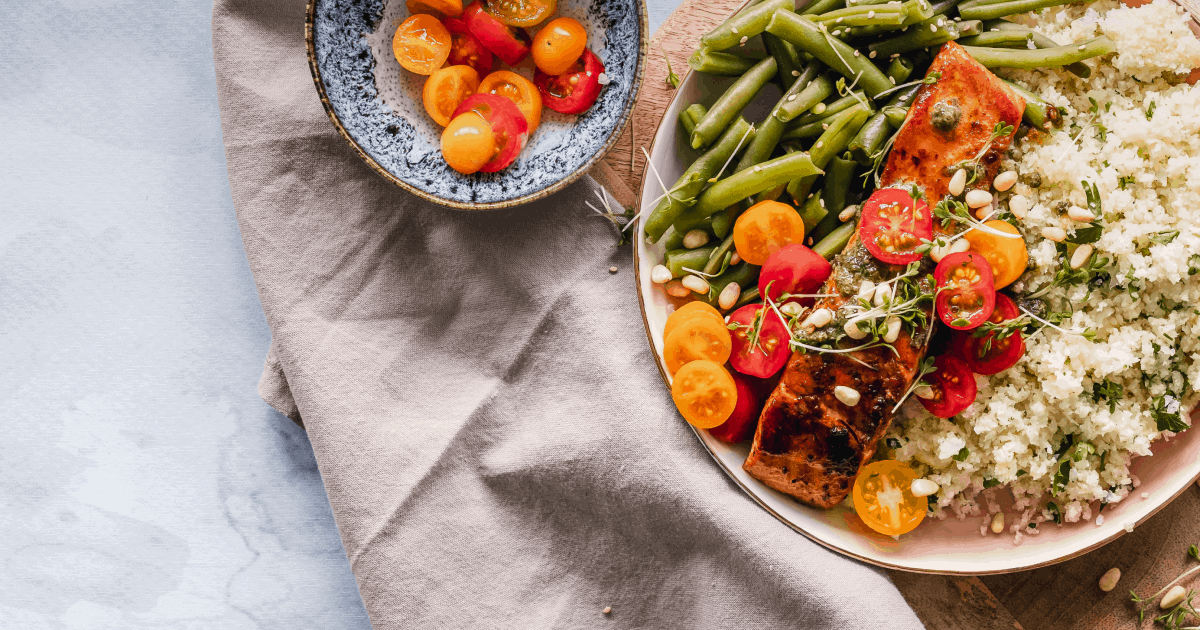


Find foods you can eat.
How to start a Low FODMAP Elimination Diet
Published on January 14, 2021Introduction
Congratulations on your decision to start a Low FODMAP diet! Since the diet has been shown to improve IBS symptoms in 60-80% of people who follow it correctly, chances are good that you’ll experience at least some relief. There are three phases to the Low FODMAP diet: the Elimination Phase, the Reintroduction Phase, and the Modified Phase. If you’re just getting started, check out my overview of FODMAPs and the Low FODMAP diet first.
Today, I’m going to talk about the first phase, the Elimination Phase, which is the strictest part of the diet. When my doctor handed me a paper about this diet many years ago, I read all of the excluded foods and said, “there’s no way I can do that!” At the time, I was a healthy vegetarian, and the thought of taking away my yogurt, whole grain breads, beans, onions, and garlic was too much to handle. So, I put that piece of paper away and didn’t look at it again until years later when I was seriously suffering. That said, I really wish I hadn’t waited so long, because the low FODMAP diet has made such an improvement in my symptoms!
Elimination Phase overview
During the elimination phase, ALL high FODMAP foods are excluded from your diet for a period of 2-6 weeks or until good symptom control is achieved. The goal is to understand if removing FODMAPs from your diet actually improves your symptoms. If it does, you will go onto the second phase, the Reintroduction Phase, to determine which specific FODMAPs are triggering your symptoms.
If you don’t find symptom relief during the Elimination Phase, it’s likely that FODMAPs were not causing your symptoms in the first place. It’s also possible that you accidentally consumed FODMAPs during the Elimination Phase. For this reason, I highly recommend working with a FODMAP-trained dietitian to ensure you follow the diet correctly and that your nutritional needs are met.
Which foods are Low FODMAP?
To get started, you’ll first need an up-to-date list of high and low FODMAP foods. I strongly suggest downloading the Monash University FODMAP app. Monash University invented the Low FODMAP diet and is constantly testing foods to determine their FODMAP content. Be wary of other FODMAP lists which are often inaccurate or outdated.
The Monash app uses an easy traffic light system to identify high and low FODMAP foods. Serving sizes are very important when following the Low FODMAP diet; many foods are either low or high FODMAP depending on how much you eat. The Monash app is the only place you’ll find accurate serving size information.
While the Monash app is great for figuring out which ingredients are high and low FODMAP, it can still be a challenge to find groceries and recipes that are Low FODMAP. The Fig app gives you a searchable list of Low FODMAP products at your favorite grocery stores. You can also scan any product’s barcode to check if it’s likely low FODMAP.
Plan your FODMAP meals
Once you have your list of high and low FODMAP foods, I suggest writing down some of the meals you currently eat most often and finding Low FODMAP substitutes for each of them. You’re most likely to be successful on this diet if you plan your food options ahead of time. As a simple example, if your lunch is usually a ham sandwich and apple slices with yogurt:
- Bread → Switch to true sourdough bread
- Mayo → Find mayo without onion powder (Fig can help with this!)
- Ham → Look for ham without honey
- Cheese → Cheese can be low FODMAP provided it is 1 gram or less of carbohydrates per serving on the nutrition label
- Lettuce → Lettuce is low FODMAP
- Apples → Enjoy raspberries in place of apples
- Yogurt → Swap your regular yogurt for lactose-free or coconut yogurt
You should be able to find low FODMAP substitutes for most foods you normally eat, but it will require diligence on your part. Swap high FODMAP fruits like apples and pears for low FODMAP alternatives like grapes and kiwi. Look for lactose-free versions of dairy products like milk, kefir, yogurt and ice cream. Again, the Monash app is your best resource.
Be very careful when shopping for groceries; ingredients like “natural flavors” in the United States can include garlic and onion. Fig will flag these ingredients for you as you shop. Eating out at restaurants is also difficult while on the Elimination Diet, as high FODMAP ingredients like garlic and onion are often added to dishes.
Don’t give up on flavor!
If you are used to flavoring everything with garlic and onions, you may find that food tastes like cardboard without them. Nobody wants to follow a diet that’s bland! Fortunately, there are substitutes for garlic and onion flavors including garlic and onion-infused oils. You can make your own oils or purchase certified low FODMAP infused oils. You can also use the green tops of scallions and leeks to replace the flavor of onion.
Many herbs and spices are low FODMAP, so the Elimination Phase is a good time to get creative and try some new seasonings and recipes. There are wonderful Low FODMAP recipe websites where you can find anything from Low FODMAP Pad Thai to a Flourless Chocolate Cake.
Be kind to yourself
If you slip up during Elimination, that is OK! Simply pick up where you left off. If you were on week two but went off the rails for a day, you are still on week two. Try not to get hung up too much on the timeframe. The point is to get to a place where your symptoms are under much better control. If your symptoms do improve, that’s great! FODMAPs are likely your triggers, and you can proceed to the Reintroduction Phase to figure out which FODMAPs in particular you need to avoid longer-term.
As I mentioned before, it may be tempting to stay in the Elimination Phase for a long period of time, because you’re thrilled that your GI symptoms have finally gone away. It’s very important to resist this urge and proceed to the Reintroduction Phase. Some FODMAPs are good for your overall health and the health of your gut microbiome. I’ve had patients come to my practice who had been in a strict elimination phase for years, and sadly they were not feeling very healthy at that point. My advice is to just get through the three phases of the diet in successive order as quickly as you can. It will be well worth it in the end.
In the event the diet doesn’t work for you, I’d suggest working with a dietitian to help you troubleshoot and find alternative solutions. As I have told many patients over the years, there is always something else you can try. Don’t give up hope!
Wishing you the best on your FODMAP journey!
Have you tried Fig? Simply download the app, and it will show you every single low FODMAP product at 100+ grocery stores and restaurants.
CONTINUE READING: Guide to Low FODMAP Reintroduction
 What are FODMAPs and a Low FODMAP diet?
What are FODMAPs and a Low FODMAP diet? Guide to Low FODMAP Reintroduction
Guide to Low FODMAP Reintroduction